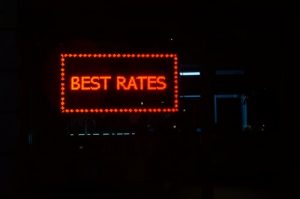The traditional goal of a down payment for a home is 20% of the purchase price, but this is not achievable for many buyers. With mortgage insurance, you can make a much lower down payment while still being eligible for a mortgage. Protects the lender in the event of late payment.
With a traditional mortgage, a mortgage that is neither guaranteed nor insured by the state, you have to pay private mortgage insurance (PMI) with a lender if you pay less than 20%. With an FHA or USDA loan, you pay mortgage insurance regardless of the deposit amount. VA mortgages require “finance charges” instead of mortgage insurance.
How does mortgage insurance work?
You bear the cost of mortgage insurance, but you take over the lender. Mortgage insurance pays part of the principal to the lender in the event of default on the mortgage. In the meantime, the loan is still outstanding if you cannot pay, and you could lose the house to a foreclosure if you fall too late.
This differs from mortgage life insurance, which pays the remaining mortgage when the borrower dies, or mortgage disability insurance, which eliminates the mortgage when the borrower becomes disabled.
PMI vs. MIP and others
Mortgage insurance works somewhat differently depending on the type of mortgage. Here is an overview of conventional and state guaranteed mortgage coverage.
PMI for conventional mortgages
Many lenders offer conventional mortgages with low down payment requirements, some of which are only 3%. A lender will likely ask you to pay for private mortgage insurance (PMI) if your deposit is less than 20%.
Before buying a home, you can use a PMI calculator to estimate PMI costs, which vary depending on the amount of your mortgage, your credit score, and other factors. The monthly PMI premium is usually included in your mortgage payment. You can cancel the PMI after you have held more than 20% of the equity in your home.
FHA Mortgage Insurance Premium (MIP)
FHA loans that are insured by the Federal Housing Administration have a minimum down payment of only 3.5% and a simpler credit rating than conventional loans. FHA mortgages require an initial mortgage insurance premium and an annual premium regardless of the amount of the down payment. The initial premium is 1.75% of the loan amount and the annual premium varies between 0.45% and 1.05% of the average balance of the loan outstanding for this year.
You pay the Annual Mortgage Insurance Premium (MIP) in monthly installments for the duration of the FHA loan if you pay less than 10%. If you pay more than 10%, you pay MIP for 11 years.
USDA mortgage insurance
USDA loan from the Ministry of Agriculture. These are zero down payment loans for rural and suburban homebuyers. Some USDA loans charge two fees for mortgage insurance: an initial guarantee fee that you pay once and an annual fee that you pay each year for the duration of the loan. The initial guarantee fee for 2019 is 1% of the loan amount. The annual fees are 0.35% of the average annual loan outstanding, divided into monthly payments and included in your mortgage payment. The federal government evaluates the rates for each fiscal year and can change them. However, the number of fees will not vary. They agreed at the end of the loan.
VA mortgage insurance
VA, veteran loans require no down payment and offer low-interest mortgage rates for active, disabled, or retired members of the military, certain members of the National Guard and reservists, and eligible surviving spouses. You don’t need mortgage insurance, but most borrowers pay “finance charges” that range between 1.25% and 3.3% of the loan amount for purchase loans. These fees depend on various factors, including whether you have ever applied for a VA loan and how much money you may need to deposit.



